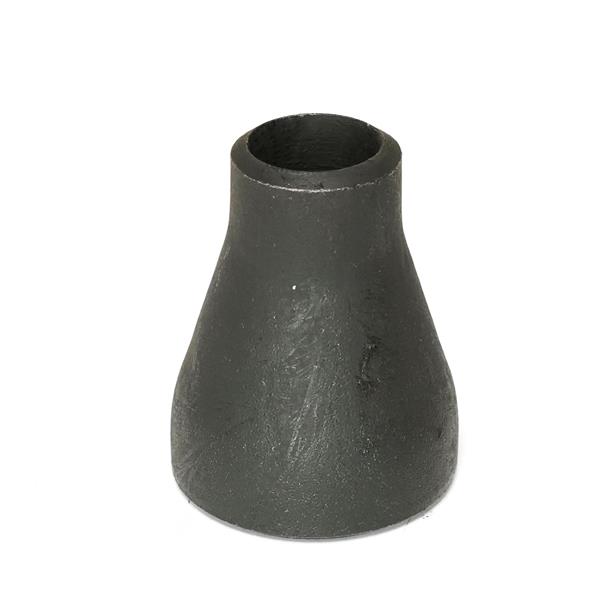The reducer, also known as the big and small head, is one of the chemical pipe fittings and is used to connect two different pipe diameters. It is further divided into concentric and eccentric heads.
Function: Mainly used for connecting two pipes with different diameters
Reducer material: including stainless steel reducer, alloy steel, reducer carbon steel small and large heads, reducer No. 20 steel q234q345, etc.
Production Method:
The roundness of the reducer should not be greater than 1% of the outer diameter of the corresponding end, and the allowable deviation is ±3mm. The material of the reducer shall comply with SY/T5037, GB/T9711, GB/T8163, American standard ASTM A106/A53 GRB, API 5L, APT5CT, ASTM A105, ASTM A234, ASTM A106, DIN German standards and customer requirements standards.
The reducer (large and small heads) is a pipe fitting used at the pipe diameter reduction point. The commonly used forming processes are reducing diameter pressing, expanding diameter pressing or reducing diameter plus expanding diameter pressing. For certain specifications of reducers, stamping can also be used.
Diameter reduction/diameter expansion forming
Schematic diagram of the reduction forming of concentric reducers. The reduction forming process of reducers is to put a tube blank with the same diameter as the large end of the reducer into the forming mold, and press it along the axial direction of the tube blank to make the metal along the mold. The cavity moves and shrinks into shape. According to the size of the reducer, it is divided into one-time press forming or multiple press forming. As shown in “Schematic Diagram of Reducing Forming of Concentric Reducers”
Diameter expansion forming is to use a tube blank that is smaller than the diameter of the large end of the reducer, and use an inner punch to expand the diameter along the inner diameter of the tube blank. The diameter expansion process mainly solves the problem that the reducer with a larger diameter cannot be easily formed by diameter reduction. Sometimes, the diameter expansion and diameter reduction methods are combined according to the material and product forming needs.
During the deformation and pressing process of diameter reduction or expansion, cold pressing or hot pressing is determined according to different materials and diameter reduction conditions. Under normal circumstances, cold pressing should be used as much as possible, but hot pressing should be used when multiple diameter changes cause severe work hardening, when the wall thickness is too thick, or when alloy steel materials are used.
stamping forming
In addition to using steel pipes as raw materials to produce reducers, some specifications of reducers can also be produced using steel plates using the stamping forming process. The shape of the punch used for drawing is designed with reference to the inner surface dimensions of the reducer, and the punch is used to punch and stretch the blanked steel plate into shape.
Author: Maria Yang
Post time: Mar-01-2024

